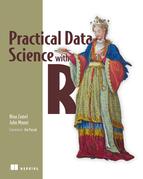List of Tables
Chapter 1. The data science process
Chapter 3. Exploring data
Chapter 5. Choosing and evaluating models
Table 5.1. Some common classification methods
Table 5.2. From problem to approach
Table 5.3. Ideal models to calibrate against
Table 5.4. Standard two-by-two confusion matrix
Table 5.5. Example classifier performance measures
Chapter 7. Linear and logistic regression
Chapter 8. Unsupervised methods
Table 8.1. A database of library transactions
Table 8.2. The five most confident rules discovered in the data
Chapter 9. Exploring advanced methods
Chapter 10. Documentation and deployment
Table 10.2. Buzz data description
Table 10.3. Maintenance tasks made easier by knitr
Table 10.4. Some useful knitr options
Table 10.5. Things not to worry about in comments
Table 10.6. A possible project directory structure
Table 10.7. Methods to demonstrate predictive model operation
Chapter 11. Producing effective presentations
Appendix A. Working with R and other tools
Appendix B. Important statistical concepts
Appendix C. More tools and ideas worth exploring
Table C.1. R topics for follow-up
